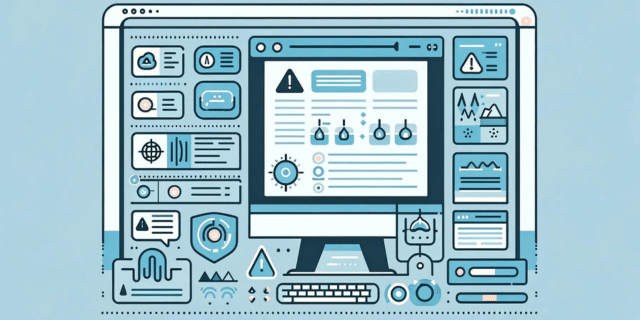In the fast-paced world of eCommerce, staying ahead of the competition is key.
Enter the cloud-native approach, with the potential to unlock scalability, resilience and cost efficiency for eCommerce platforms everywhere.
But what is cloud-native? And if you’re in eCommerce, why should you get in on the action sooner rather than later?
Brace yourself as we navigate through a maze of buzzwords and tech jargon to try and shed light on what this cloud-native business is all about.
Understanding the cloud-native approach
Cloud-native is a term that describes the concept of building and running applications in a way that maximises the benefits of cloud, often focusing on a few key technologies.
- Microservices – If your monolith is weighing you down, switching to a microservice architecture could be a game-changer. These self-contained components can be managed and deployed independently, opening the door to scalability, speedy development and fault isolation
- API first – An API (application programming interface) is a set of rules that allow software components to communicate with each other. The API-first approach prioritises developing APIs before writing code, instead of treating them as afterthoughts
- Containers – A container is a lightweight, isolated environment that packages applications and services, making deploying consistently across multiple environments easier. When using microservices, containers can help you scale and deploy seamlessly through a consistent runtime environment. You can also enjoy them on their own, depending on your application architecture
- DevOps – DevOps is an approach to software development that promotes collaboration and integration between the development and operations teams. There is a cultural and technological element to DevOps, but in combination, they add up to faster, more robust deployments
- Continuous integrations/Continuous delivery (CI/CD) – CI/CD is a software practice that automates the process of integrating code changes, testing and deploying to production. In a nutshell, CI/CD allows you to automate software build and deployment and deliver better quality software, faster
- Serverless – As it says on the tin. Going serverless means moving away from server-based infrastructure to a more flexible, cost-efficient model where you only pay for the resources you use. It allows developers to focus on writing and deploying code without the hassle of managing servers. Think of it like taking a 15-minute Uber versus owning and maintaining a car all year round
That’s a quick round-up of the technologies people are usually talking about when they say something’s ‘cloud native.’
Click here for our deeper thoughts on…
…or keep reading to see how these technologies can benefit eCommerce sites.
Managing high-demand traffic with cloud-native applications
Although monolithic architectures are built to handle peak traffic, your platform risks crashing if the system is pushed too far.
That means during peak shopping seasons like Black Friday, surges in demand may result in downtime and lost revenue.
And when your site is down – or perhaps just running slower than normal – customers won’t hesitate to jump ship to your competitors.
However, cloud-native solutions are designed to handle your wildest scalability challenges:
- Microservices are far more scaleable than traditional infrastructure, allowing you to scale different services (shopping cart, product search etc.) independently
- Containers are also more lightweight than traditional VMs
- Serverless platforms automatically scale resources in line with demand, accommodating traffic spikes with ease
Faster-time-to-market with cloud-native eCommerce
Having a faster time-to-market gives your business a competitive edge. It means you can roll out new product ranges, site features and designs fast.
With a cloud-native approach, you’d have a far easier time adding, say, a new payment portal, meaning you can respond to trends in customer demand much more efficiently.
Some ways cloud native can grease the wheels include:
- DevOps is all about reducing time to market via automating elements of the deployment and development lifecycle. Working with a DevOps-as-a-service provider means putting your pipeline in the cloud, automating as much as you can and removing human error
- Microservices mean you can swap and change up individual services without disrupting the overall application. This is great for building out new features
- API first means you’re more open to integrating with 3rd-party services, this means you don’t need to develop everything yourself, allowing for a more distributed approach to eCommerce, which is very much the thing right now
Fault tolerance and resilience
To build customer trust, your eCommerce platform must be fault tolerant.
There are only so many times a customer is going to revisit a broken site before taking their business elsewhere – especially when they’re handing over their card details.
Luckily, there are more than a few ways cloud-native architectures can provide a thick skin:
- Microservices can contain failures within individual services, keeping the overall application safer
- DevOps removes human error and promotes working in small, safe iterations with plenty of back-ups – all of this keeps your site or app running smoothly
Improved security
Protecting your customers’ data from cyber attacks is essential to maintain trust and safeguard your revenue.
In the world of eCommerce, the reality is that your business faces increased vulnerability and more severe consequences from cyber threats. It’s just the nature of the beast. Luckily:
- Microservices mean an overall reduced surface area for attackers
- Serverless also constricts the amount of your app that’s actually ‘on show’ to potential cyber threats
Reduced infrastructure cost for your business
By cutting down the infrastructure costs of your eCommerce platform, you can free up more money to enhance the customer experience and inject your cash into new products or services which can help you stand out in a saturated marketplace.
- Once your microservices architecture is all set up, the difference in scaling and overall agility means can do what you need for less
- Serverless vastly cuts costs on idle resources
- DevOps, although a pricey practice to set up, will save you a lot of cash further down the road, quickening the pace of production and cutting out costly mistakes
How can we help?
If we’ve done our jobs right, you now have a solid understanding of the advantages of cloud-native and why it’s a game-changer for eCommerce businesses.
We have also reached the point in this blog where we shamelessly plug our services.
If you’re looking to tap into the many benefits of cloud-native solutions, then you’re in luck.
As a cloud-native MSP providing managed services for eCommerce, we’ve helped all kinds of brands get the best of the latest when it comes to cloud and bleeding-edge tech.
We’ve delivered projects for:
- Global appliance brand OSIM
- No. 1 UK kitchenware supplier ProCook
- Brooks Brothers and Anello brand distributors (among many more) Minor Lifestyle
- European and US specialist camera equipment brand MPB
…to name but a few.
The bottom line is, whether you’re an eCommerce brand wanting to dip your toe in the cloud-native waters, or you’re all in on a brand new serverless architecture, just get in touch.




